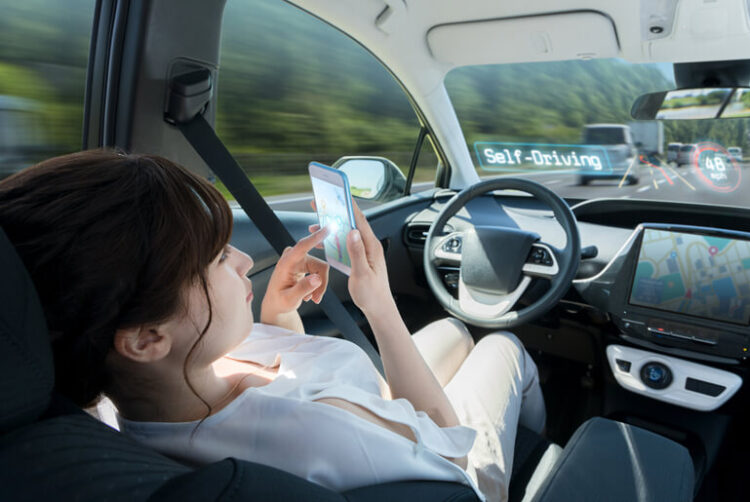Many new cars today are equipped with advanced driver assistance features. They help with driving or parking, including automatic emergency braking and forward-collision warning features. Sometimes cars are marketed as self-driving, but most actually have driver assistance technology.
Table of Contents
Since companies like Tesla have self-driving cars coming out in the near future, it could take several years for autonomous cars to be safe enough to enter the market. But which is safer? In this article, we take a look at the safety mechanisms and safety improvements for both and which offers the most safety potential for car owners.
Safety Mechanisms in Self-Driving & Drive Assistance Technology
According to the National Highway Traffic Safety Administration, six levels of driver assistance technology have been established by the Society of Automotive Engineering (SAE). They range from Level 0 with no automation to Level 5, which consists of full automation. SAE has defined the extent of human involvement for each level.
Most production vehicles built today fall between Level 0 and Level 2, covering driver assistance and partial automation. Cars produced in the past five years are more likely to have Level 1 tech, which helps drivers with steering and braking/accelerating, but both at different times. Level 2 or partial automation tech combines steering and accelerating functions at the same time and requires driver monitoring. Levels 1 and 2 include cars with driver assistance features.
Have 1 million naira and above to Buy or Sell Cars In Nigeria?Check carlots.ng RIght Now RIght Now
A self-driving car such as Google’s Waymo operates at Level 4, high automation. The car can perform all driving tasks under certain conditions but allow the driver to intervene when necessary. The goal for Google, Tesla, Ford, Uber, and other automakers that are working on autonomous cars is to reach Level 5, but no car company has reached this goal yet.
Functional safety is the safety mechanism for cars with driver assistance tech or partial automation. The goal is for the car’s safety equipment to function properly while reducing the risk of injury or death to the driver and damage to property. This safety mechanism is meant to prevent failure in the system’s electric and electronic components.
Self-driving cars have a safety mechanism that is based on the “safety of the intended functionality,” or SOTIF. It applies to artificial intelligence and machine learning used to operate autonomous cars. This safety mechanism requires developers to create automotive software that accounts for trains the car’s computer to respond to a wide range of hazardous situations to keep drivers safe.
Also, engineers designing self-driving cars will build the SOTIF safety mechanism on top of the functional safety mechanism. But the two safety mechanisms are distinctly different. Functional safety is risk-based and is based on the avoidance of system equipment failure, while SOTIF is software-driven and proactive in training the onboard computer to sense real-time driving dangers.
Safety Improvement in Self-Driving & Drive Assistance Vehicles
The measure for safety improvements for cars equipped with advanced driver assistance systems is how much these systems can reduce crashes. Lane-keeping assistance systems reduced single-vehicle, sideswipe, and head-on crashes with injuries. Blind-spot detection reduced crashes with injuries, and backing collision avoidance systems reduced crashes with injuries. However, there’s no data for pedestrian detection systems available yet.
In comparison, safety improvements for self-driving cars are based on the data gathered by the miles the car has travelled. The further self-driving cars travel, the more the car’s computer learns about its driving environment. As a result, safety engineers look at the distance in miles between human interventions, crashes, and fatalities to measure safety improvements for these cars.
Does Self-driving Technology Have the Most Safety Potential?
Self-driving cars can compensate greatly for human error and may be part of the solution to reducing death rates caused annually by automobile accidents. But there are two questions in the minds of car owners and car lovers about the safety potential of self-driving cars. One is: how much safety? If engineers can train a car’s computer to keep its driver safe, have they been able to come up with every driving situation that presents danger?
Conclusion
Although autonomous cars could offer more safety potential than those with driver assistance systems in the future, we still need cars with driver assistance systems to keep drivers safe right now.
Have 1 million naira and above to Buy or Sell Cars In Nigeria? Check carlots.ng
All rights reserved. Reproduction, publication, broadcasting, rewriting, or redistribution of this material and other digital content on carmart.ng is strictly prohibited without prior express written permission from Carmart Nigeria - Contact: [email protected]






